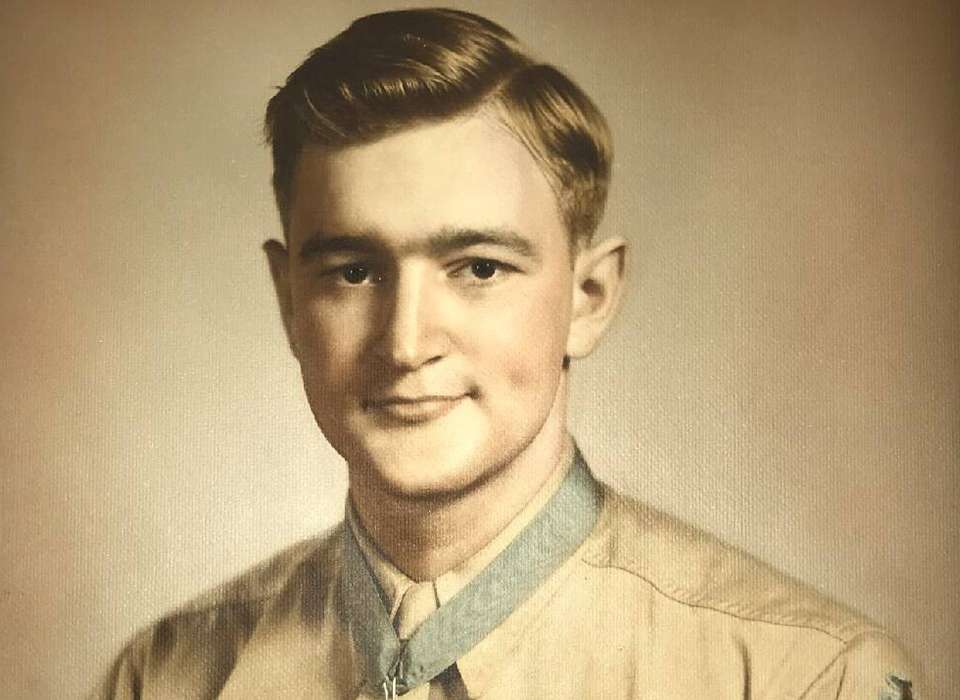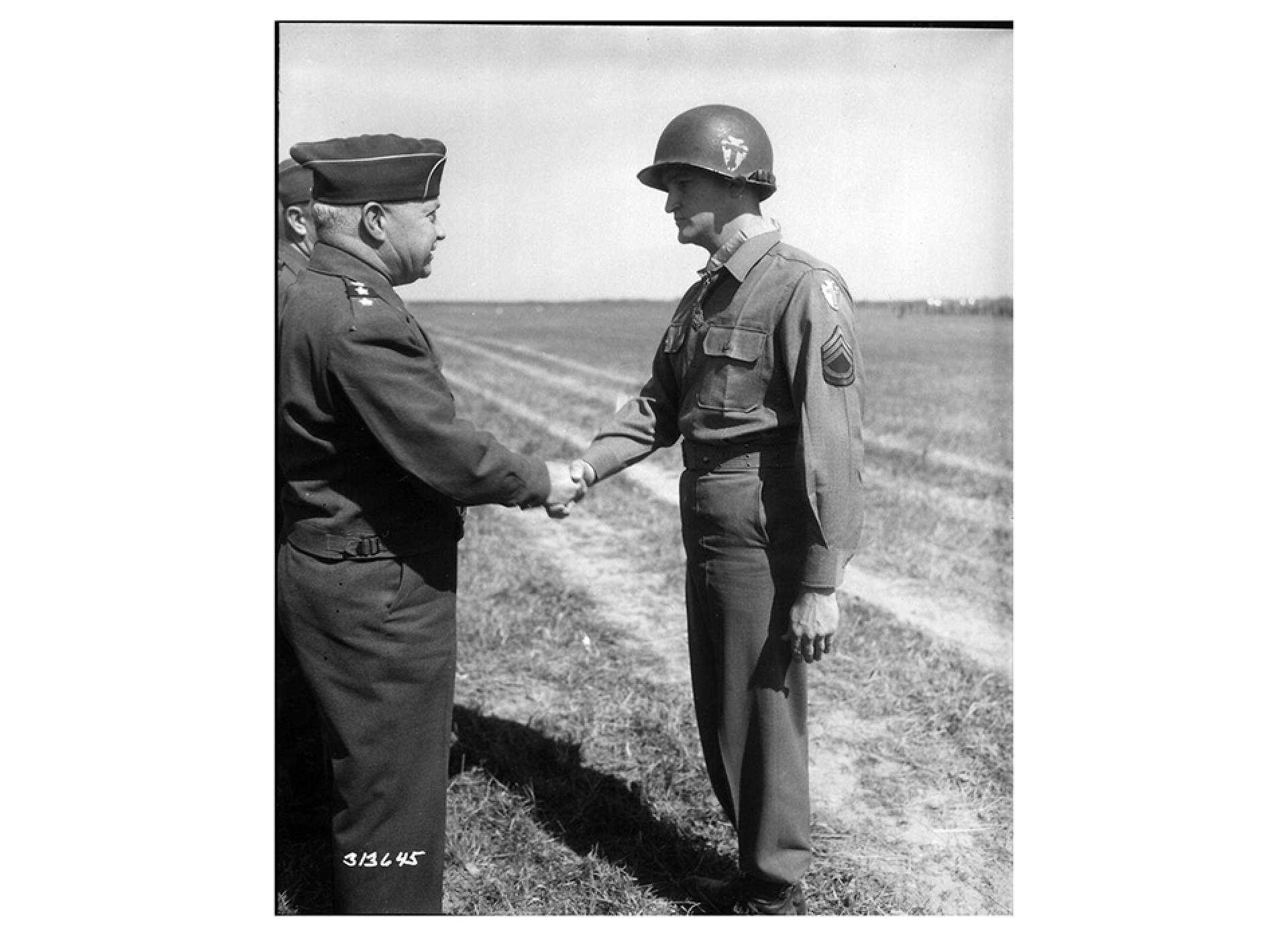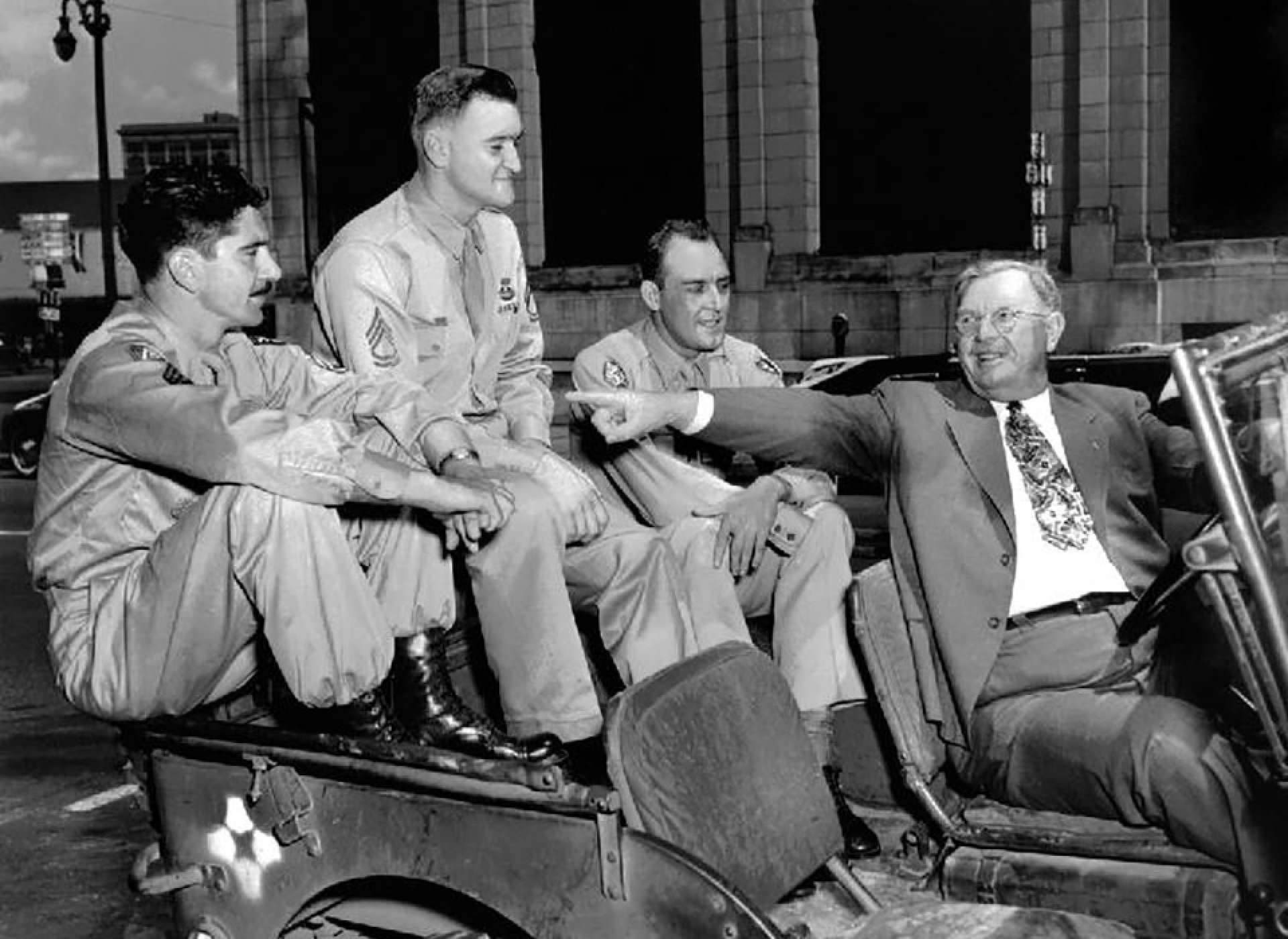Top Image: Charles Coolidge courtesy of Chattanooga Times Free Press.
Charles Henry Coolidge was born in 1921, in Signal Mountain, Tennessee, a small town near Chattanooga. His family ran a printing company where Coolidge worked as a teenager and after finishing high school. Despite the Great Depression, his father worked hard to keep the business open and his employees paid, teaching Coolidge about loyalty and duty, lessons which served him well in the army. Graduating from high school in 1939, Coolidge opted out of going to college that fall. When asked why he had not, Coolidge replied that he figured war was coming and “it didn’t take a whole lot of education to go and shoot people.”
Drafted in the summer of 1942, Coolidge underwent training in Georgia, Alabama, and North Carolina, where he was trained on a water-cooled .30 caliber machine gun and an 81 mm mortar. He was assigned to Company M, 141st Infantry Regiment, 36th Infantry Division. In the spring of 1943, the 36th Division shipped out for the European theater, arriving in North Africa, where the division prepared for the invasion of Italy. During training in North Africa, Coolidge’s time in the mountains of Tennessee served him well. Responsible for carrying a heavy machine gun tripod, Coolidge often opted to not carry water due to the additional weight, relying instead on his knowledge of terrain to find drinkable water.
The 36th Infantry Division landed in Italy in September 1943, participating in the Battle of Salerno. Into the next year, Coolidge participated in some of the fiercest fights in Italy, including Anzio, San Pietro, the Rapido River, Monte Cassino, and the eventual capture of Rome. He had many close calls along the way and lost many good friends. During one retreat his helmet got knocked off. Never one to have enjoyed wearing it to begin with, Coolidge decided to forego a helmet, wearing a jeep cap instead, and pointing to the British as an example of shirking such gear.
By summer 1944, Coolidge was a seasoned combat veteran. He had been awarded the Silver Star for his actions at Anzio in May of that year. At one point his company, normally 130 strong, was whittled down to 27 men. There had been many close calls and lessons learned when, in August 1944, Coolidge participated in the landings in Southern France, code named Operation Dragoon. After suffering heavy casualties in Italy, most of the troops in Coolidge’s company were green replacements, fresh from boot camp. Resistance was weak in the early days of the drive north into France, and Coolidge recalled in his oral history covering 500 miles in the first month. As summer turned into fall, and the drive northward into France began to turn east into Germany, resistance became stronger.
In late October 1944, the 141st was in Belmont-sur-Buttant, France, in the Vosges Mountains less than 100 miles from the German border. By this time, Coolidge was a squad leader in charge of 12 men. Attached to Company K, Coolidge and his squad along with a platoon from Company K made contact with what they believed to be an enemy company in the woods near Belmont. Being the most senior man present, Coolidge took command of what became a three-day standoff between the small group of Americans and the German infantry company. Unfazed by German small arms, machine-gun, and eventually tank fire, Coolidge provided calm and courageous leadership to the green men under his command. Risking his own life numerous times, Coolidge’s heroics and leadership during the three-day engagement resulted in a Medal of Honor. When asked how he survived the ordeal, Coolidge responded, “I didn’t care about me, I cared about my men. I’d do anything for them.” Coolidge survived the war, and, miraculously, was never wounded—a feat which he credited to his faith.
-

Coolidge shakes hands with Lieutenant General Wade Haislip after being presented with the Medal of Honor on June 18, 1945. Image from the National Archives and Records Administration.
-

After his return home, Coolidge (seated in the center on the back of the jeep) participated in an Armed Forces Day parade in Chattanooga, Tennessee. Coolidge, along with fellow Tennessean Medal of Honor recipients Paul Huff (left) and Raymond Cooley (right) were driving in a jeep by WWI Medal of Honor recipient Alvin York. Courtesy of the Charles H. Coolidge National Medal of Honor Heritage Center.
To hear Coolidge recount the story of his Medal of Honor action, listen to his oral history in the Museum’s Digital Collection. After the war, Coolidge returned home to Signal Mountain, Tennessee, where he eventually took over the family’s printing business, Chattanooga Printing & Engraving. He married Frances Seepe and the couple had three sons. Coolidge retired from the family business at 95, and at his death on April 6, 2021, at age 99, he was one of only two WWII Medal of Honor recipients still living.
Medal of Honor Citation
Leading a section of heavy machine guns supported by one platoon of Company K, he took a position near Hill 623, east of Belmont-sur-Buttant, France, 24 October 1944, with the mission of covering the right flank of the 3d Battalion and supporting its action. TSgt. Coolidge went forward with a sergeant of Company K to reconnoiter positions for coordinating the fires of the light and heavy machine guns. They ran into an enemy force in the woods estimated to be an infantry company. TSgt. Coolidge, attempting to bluff the Germans by a show of assurance and boldness, called upon them to surrender, whereupon the enemy opened fire. With his carbine, TSgt. Coolidge wounded two of them. There being no officer present with the force, TSgt. Coolidge at once assumed command. Many of the men were replacements recently arrived; this was their first experience under fire. TSgt. Coolidge, unmindful of the enemy fire delivered at close range, walked along the position, calming and encouraging his men and directing their fire. The attack was thrown back. Through 24 and 26 October the enemy launched repeated attacks against the position of this combat group but each was repulsed due to TSgt. Coolidge’s able leadership. On 27 October, German infantry, supported by two tanks, made a determined attack on the position. The area was swept by enemy small-arms, machine-gun, and tank fire. TSgt. Coolidge armed himself with a bazooka and advanced within 25 yards of the tanks. His bazooka failed to function and he threw it aside. Securing all the hand grenades he could carry, he crawled forward and inflicted heavy casualties on the advancing enemy. Finally it became apparent that the enemy, in greatly superior force, supported by tanks, would overrun the position. TSgt. Coolidge, displaying great coolness and courage, directed and conducted an orderly withdrawal, being himself the last to leave the position. As a result of TSgt. Coolidge’s heroic and superior leadership, the mission of his combat group was accomplished throughout four days of continuous fighting against numerically superior enemy troops in rain and cold and amid dense woods.
Kali Martin
Kali Martin is a former Research Historian of The National WWII Museum's Jenny Craig Institute for the Study of War and Democracy.
Cite this article:
MLA Citation:
APA Citation:
Chicago Style Citation:







![Max Fuchs, New York City cantor, sings as Rabbi Sydney [sic] Lefkowitz, Richmond, VA, conducts the first Jewish services from Germany.](/sites/default/files/styles/max_650x650/public/2025-10/image1.jpg)



